MONOCULAR COMPOUND MICROSCOPE
MAKER:ROBERT TOLLES (BOSTON OPTICAL WORKS)
MODEL: 'B'
c.1880
SIGNED: 'BOSTON,OPTICAL WORKS, TOLLES'
COLLECTION OF: ALLAN WISSNER
Please Click On Any Picture for a Larger Version
DESCRIPTION:
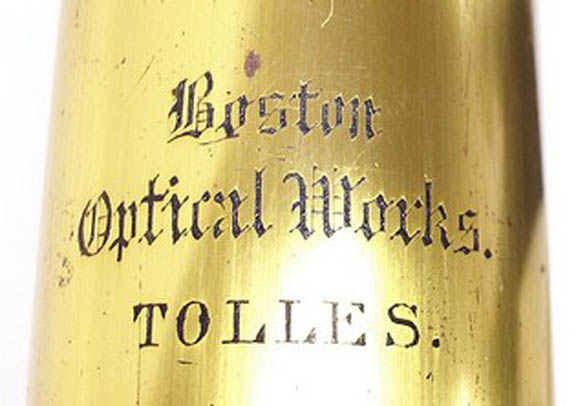 This microscope is in the collection of Allan Wissner and I am grateful for his permission to use his images on my site. It is signed on the optical tube
This microscope is in the collection of Allan Wissner and I am grateful for his permission to use his images on my site. It is signed on the optical tube Boston, Optical Works, Tolles
The microscope arises from two pillars on a V-shaped foot. A trunnion joint at the top of the pillars allows adjustable inclination and a knob allows the tension to be adjusted and the stand locked at any angle. The substage is focused by rack and pinion and there is centering provided to the sleeve to accept a condenser. The gimbaled mirror is plain on one side and concave on the other, attached to its sleeve a a double jointed extension. It is attached to the tailpiece by a sliding sleeve that can be locked in position. This sleeve can be removed to allow another sleeve holding the oblique illumination accessory(see below) to be attached above it. Coarse focusing is by rack and pinion and fine is by nosepiece short lever. The stage is of the usual Tolles profile, thicker in the rear tapering to thinner for most of the rest of it. As the Tolles catalog states, this thin stage can admit light of great obliquity
. It can rotate 325o inside the ring supporting it. Controls on the stage allow movement of the slide in the X and Y axes.
ACCESSORIES FOR THIS MICROSCOPE:
Objectives:

There are seven Tolles obectives with this microscope. They include focal lengths of 1/2 inch, 1/3 inch, 1/6 inch(2), 1/8 inch, 1/10 inch, and 1/16 inch. All but the 1/2 inch have correction collars. The two 1/6 inch objectives have different apertures, one being 135 degrees and the other being the famous 180 degree model.
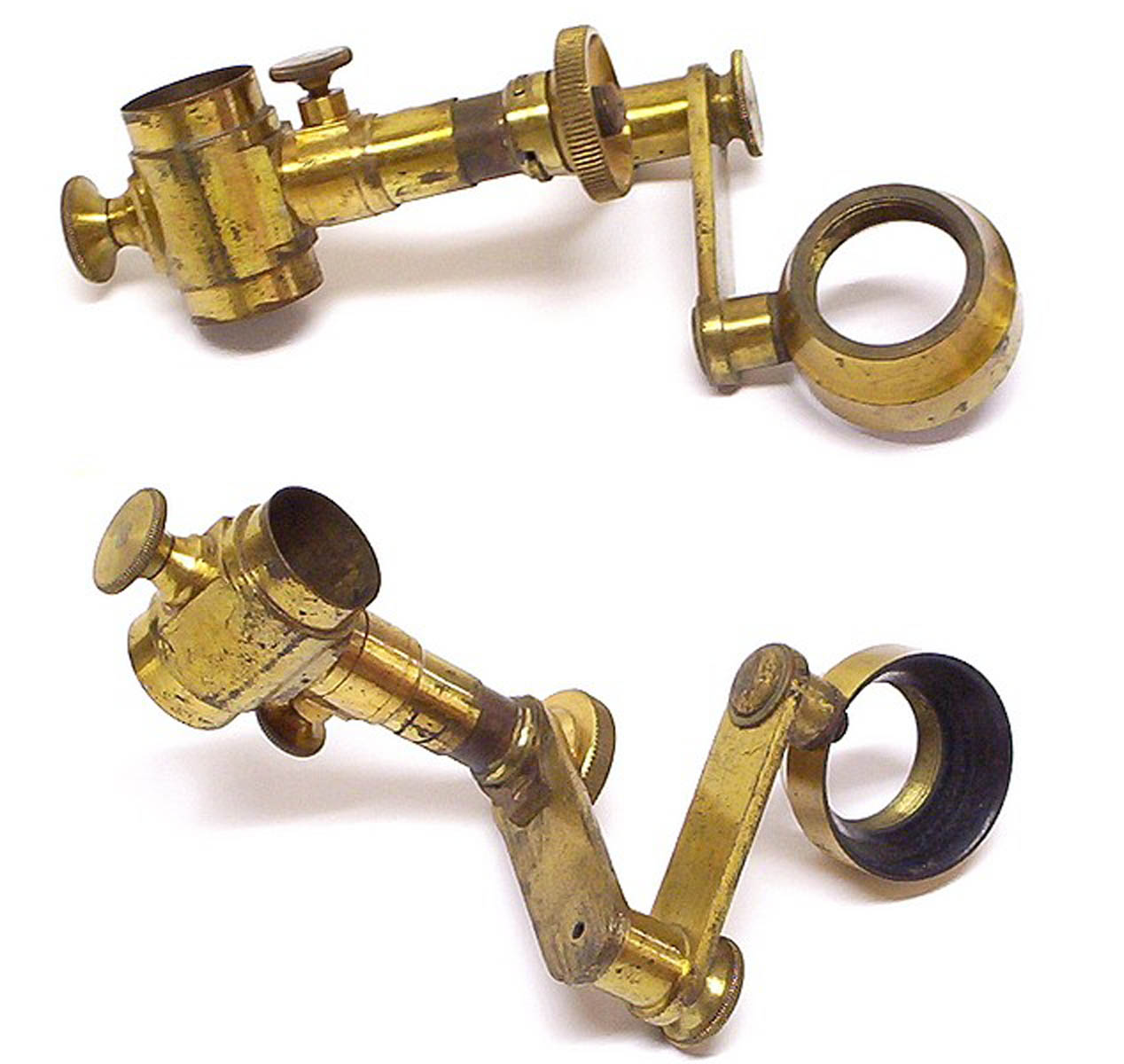
Oblique Illumination Attachment(?):I believe this is an accessory to attach to the tailpiece above the mirror assembly. This device, with a double jointed arm, was likely designed to allow an objective to be used as a condenser from a very oblique angle thus allowing good oblique illumination. It is provided with knobs to lock its position on the tailpiece, its distance from the tailpiece and its angle. In use, the standard substage assembly is removed, and the mirror assembly slipped off the tailpiece. The oblique illumination accessory is then slipped up on the tailpiece, and the mirror assembly replaced so both the oblique illuminator and the mirror below it can be oriented in any direction and angle desired. Because of its design, this device would require an objective with a cone-shaped front and would not be usable for this purpose with a higher power objective due to their short working distance. The cone-tipped objective with this microscope is likely what it was intended to be used with. I have found no reference to this device in the literature.
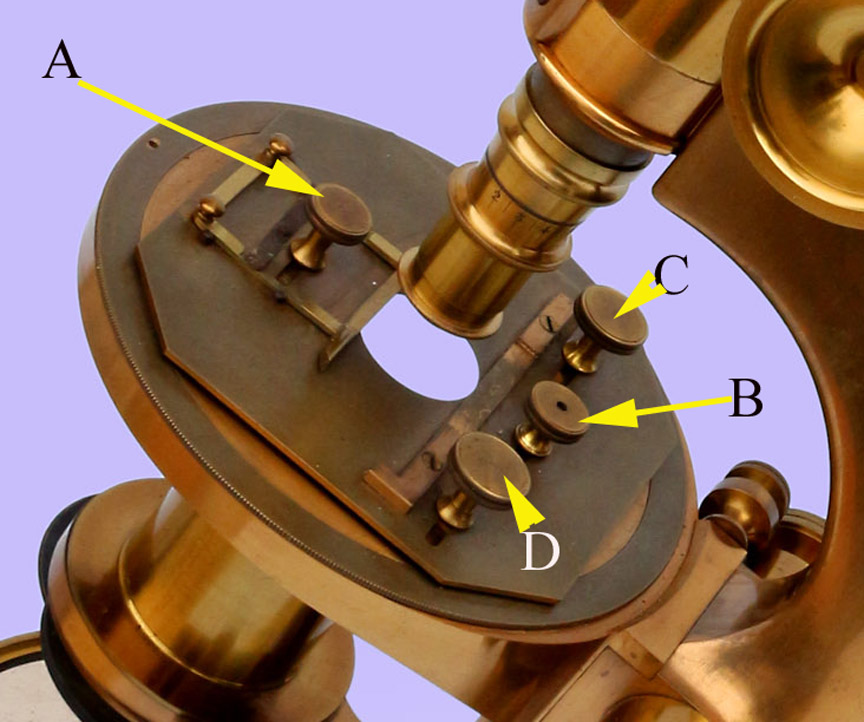
The B stand commonly featured the Tolles roller stage with movements achieved via friction rollers. Controls labeled A and B move the stage in the right-left direction and the controls labeled C and D move it in the back and forth direction.
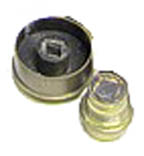
The Tolles B stand also came with a substage polarizer and nosepiece analyzer.
OTHER ACCESSORIES SUPPLIED WITH TOLLES' B STANDS:
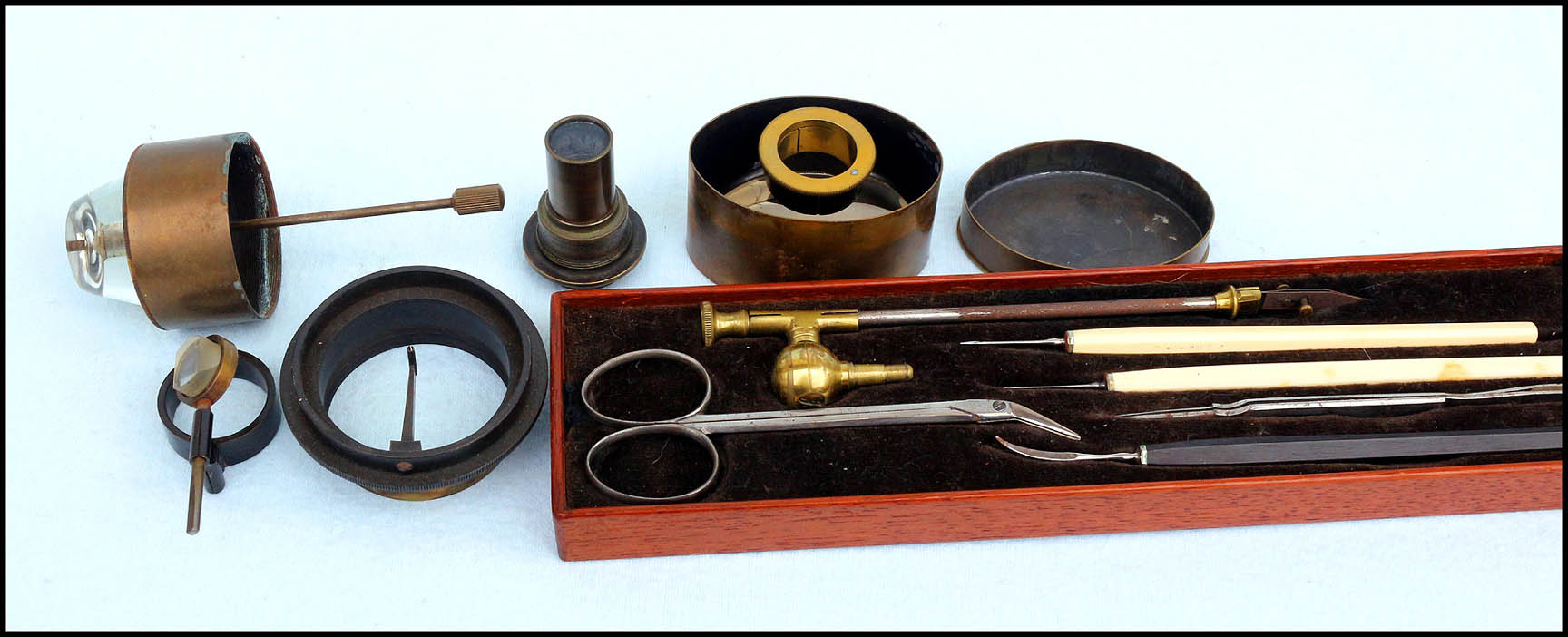
Some additional accessories found with other B stands are shown here, and below. These include stage forceps, dissecting tools, a objective-mounted side-reflector, another type of analyzer, a darkwell holder, a prism camera lucida, and a paraboloid condenser for dark ground work.

A Tolles B model microscope in the Science Museum in London, said to be Tolles own working microscope, has additional accessories. These include interchangeable stages, a small film camera, as well as a Tolles substage oblique illumination apparatus(patented Jan 1, 1878)which provides a swinging or tilting substage with graduated arc and carrying a condenser at any angle. A swinging or tilting substage was invented many years before, but this version featured the option of using a stationary planoconvex lens(L) immediately beneath the stage, on which a matching lens on the swinging arm traversed as the angle was changed.
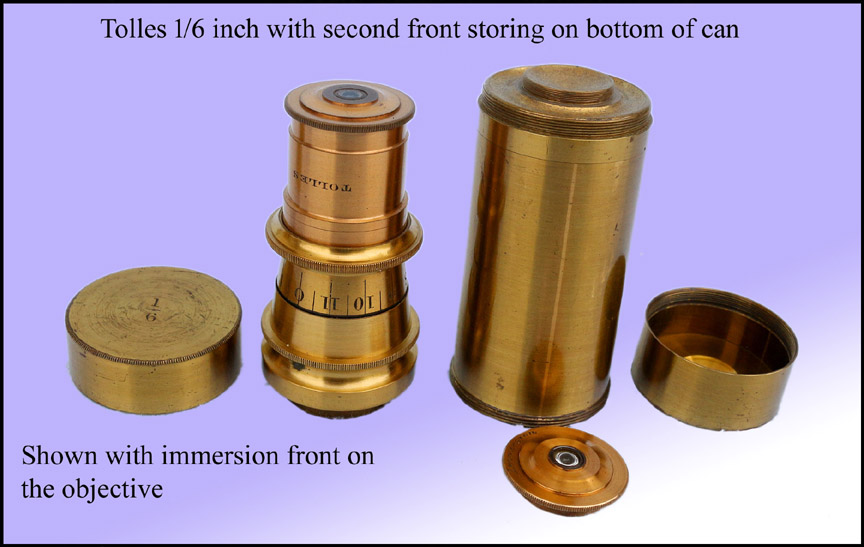
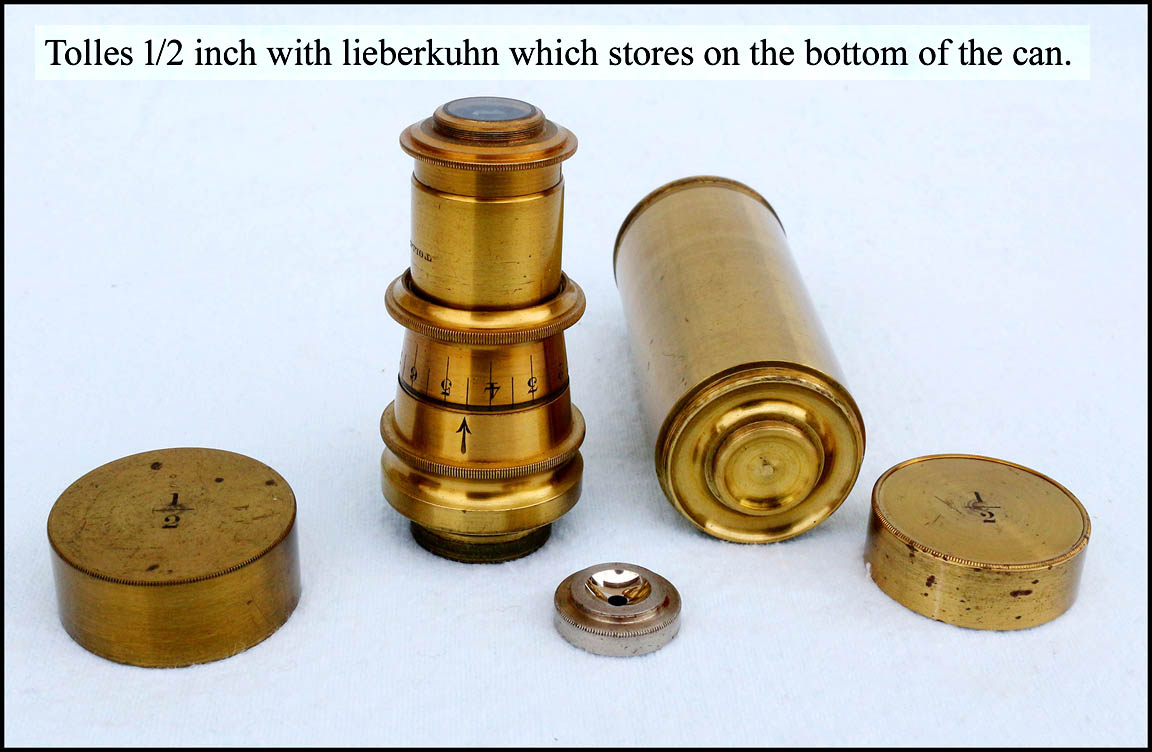
Tolles produced objectives with exchangeable front elements, one for use in air and also an immersion front. The extra front stored on the bottom of the same can as the objective, with a separate screw-on cap. He also provided lieberkuhns for his lower power lenses that stored in a similar fashion.
HISTORY OF TOLLES MICROSCOPES:
There are many reviews of the life of Robert Tolles. A brief review of some of Tolles' and Dalton's microscopes is on this site. Additional examples of the work of either man would be welcome.
The author would again like to thank Allan Wissner for allowing me to use his images of his Tolles B Microscope and its accessories. I would also like to thank Jim Solliday and Dr Joe Zeligs for their assistance as well.
 This microscope is in the collection of Allan Wissner and I am grateful for his permission to use his images on my site. It is signed on the optical tube
This microscope is in the collection of Allan Wissner and I am grateful for his permission to use his images on my site. It is signed on the optical tube 






